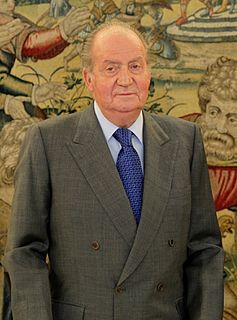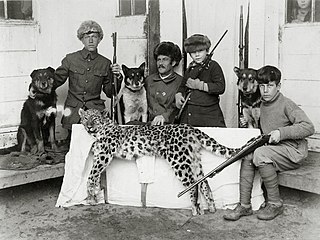 W
WFrance Avčin was a Slovenian electrical engineer, inventor, and mountain safety expert. He was the first post-World War II president of the Alpine Association of Slovenia. He was also a keen hunter and environmentalist.
 W
WClaude de Lorraine, also called Claude de Guise, was a French noble and husband of Marie de Rohan. He was the Duke of Chevreuse, a title which is today used by the Duke of Luynes.
 W
WCharles de Cossé, comte de Brissac, was a French courtier and soldier, named beau Brissac at court and remembered as the Maréchal Brissac. A member of the nobility of Anjou, he was appointed in 1540 to his father's prestigious former post of Grand Falconer of France, one of the Great Officers of the Maison du Roi. This was not purely honorary, as the king still hunted with falcons. Brissac was also Grand Panetier, and his position as colonel general of the cavalry (1548–49) was a court appointment. Raised to Marshal of France in 1550, he was Grand Master of the Artillery. He was eventually given the title of Count of Brissac. His son, Charles II de Cossé, became the first Duke of Brissac.
 W
WCharles II de Cossé was the first Duke of Brissac, a title he was granted in 1611. He was a prominent French soldier and became a Marshal of France, a position conferred upon him by Henry IV of France in 1594.
 W
WPhilippe, Lord of Rubempré was a Flemish Noble lord who was the son of Antoine III, Lord of Rubempré and Marie d'Averhoult. He was created for merit the 1st Count of Vertaing in 1614 and 1st Baron of Everbergh in 1620 by the Archdukes.
 W
WThe Dozo are traditional hunters in northern Côte d'Ivoire, southeast Mali, and Burkina Faso, and members of a co-fraternity containing initiated hunters and sons of Dozo, called a Donzo Ton. Not an ethnic group, the Dozo are drawn mostly from Mandé-speaking groups, but are also found among Dyula-speaking communities, Dogon, and most other ethnic groups in Côte d'Ivoire. Dozo societies increased in the last decades of the twentieth century, and Dozo groups came into political prominence during the Ivorian Civil War.
 W
WThis list of famous big-game hunters includes sportsmen who gained fame largely or solely because of their big-game hunting exploits. The members of this list either hunted big game for sport, to advance the science of their day, or as professional hunters. It includes brief biographical details focusing on the type of game hunted, methods employed, and weapons used by those featured.
 W
WFrancisco de Asís "Francis" Franco y Martínez-Bordiú, 2nd Lord of Meirás, Grandee of Spain, 11th Marquis of Villaverde, is a Spanish aristocrat, manager of several business associations and poacher.
 W
WFranz Joseph I or Francis Joseph I was Emperor of Austria, King of Hungary, Croatia, and Bohemia, and monarch of other states of the Austro-Hungarian Empire, from 2 December 1848 until his death. From 1 May 1850 to 24 August 1866 he was also President of the German Confederation. He was the longest-reigning ruler of Austria and Hungary, as well as the sixth-longest-reigning monarch of any country in history.
 W
WCount Henry III of Nassau-Dillenburg-Dietz, Lord of Breda, Lord of the Lek, of Dietz, etc. was a count of the House of Nassau.
 W
WWładysław Horodecki was a Polish architect active in the Russian Empire and later in the Second Polish Republic. He is best known for his contributions in the urban development of Kyiv, with buildings such as the House with Chimaeras, the St. Nicholas Roman Catholic Cathedral, the Karaite Kenesa, and the National Art Museum of Ukraine.
 W
WJohn IV of Glymes, 2nd Marquess of Berghes (1528–1567), Grand Huntsman of Brabant, was a noble from the Low Countries.
 W
WJuan Carlos I is a member of the Spanish royal family who reigned as King of Spain from November 1975 until his abdication in June 2014. In Spain, since his abdication, Juan Carlos has usually been referred to as the Rey Emérito.
 W
WLouis César de La Baume Le Blanc, duc de Vaujours, duc de La Vallière, was a French nobleman, bibliophile and military man. The present duc d'Uzès and duc de Luynes descend from him.
 W
WLouis XIV, also known as Louis the Great or the Sun King, was King of France from 14 May 1643 until his death in 1715. His reign of 72 years and 110 days is the longest recorded of any monarch of a sovereign country in European history. Louis XIV's France was emblematic of the age of absolutism in Europe. The King surrounded himself with a variety of significant political, military, and cultural figures, such as Mazarin, Colbert, Louvois, the Grand Condé, Turenne, Vauban, Boulle, Molière, Racine, Boileau, La Fontaine, Lully, Charpentier, Marais, Le Brun, Rigaud, Bossuet, Le Vau, Mansart, Charles Perrault, Claude Perrault, and Le Nôtre.
 W
WCharles d'Albert, Duke of Luynes was French courtier and a favourite of Louis XIII. In 1619, the king made him Duke of Luynes and a Peer of France, and in 1621, Constable of France. Luynes died of scarlet fever near the end of that year at the height of his influence.
 W
WLouis-Charles d'Albert de Luynes, 2nd Duke of Luynes, was a French nobleman and peer of France. He was a translator and moralist who was the first translator of the work of René Descartes.
 W
WThe Matagi are traditional winter hunters of the Tōhoku region of northern Japan, most famously today in the Shirakami-Sanchi forest between Akita and Aomori. They hunt deer and bear, and their culture has much in common with the bear worship of the Ainu.
 W
WMuhammad Iqbal Mauladad (1926–1970), nicknamed Bali, was a big game hunter in Kenya.
 W
WNimrod, a biblical figure described as a king in the land of Shinar (Mesopotamia), was according to the Book of Genesis and Books of Chronicles, the son of Cush. The Bible states that he was "a mighty hunter before the Lord [and] ... began to be mighty in the earth". Extra-biblical traditions associating him with the Tower of Babel led to his reputation as a king who was rebellious against God.
 W
WAbdul Reza Pahlavi was a member of Iran's Pahlavi dynasty. He was a son of Reza Shah and a half-brother of Mohammad Reza Pahlavi.
 W
WPaul Friedrich Johann Moritz Pogge was a German explorer in Africa.
 W
WA professional hunter is a person who hunts and/or manages game by profession. Some professional hunters work in the private sector or for government agencies and manage species that are considered overabundant, others are self-employed and make a living by selling hides and meat, while still others guide clients on big-game hunts.
 W
WHans Schomburgk, was a German adventurer, filmmaker and until 1912 a big-game hunter.
 W
WFranz-Joseph von Seefried auf Buttenheim y Baviera, Count of Seefried was the son of Count Otto von Seefried and his wife, Princess Elisabeth Marie of Bavaria, granddaughter of Emperor Franz Joseph I of Austria. He was known for his work as a naturalist and hunter in Spain, where he served as trade commissioner of Austria.
 W
WAlexander "Sasha" Siemel was an American/Argentinian adventurer, professional hunter, guide, actor, writer, photographer, and lecturer of Latvian origin. He spoke seven languages and boasted of having experienced more adventure in a single year than most men had witnessed in a lifetime. He is known among sportsmen, claiming to have successfully hunted more than 300 jaguars — or onças, as the big cats are colloquially known in parts of Latin America—in the Mato Grosso jungles of Brazil. Siemel's accomplishments in pursuing the large and often dangerous jaguar are all the more impressive because on many of his hunts, he was allegedly armed only with a spear.
 W
WDersu Uzala was a Nanai trapper and hunter. He worked as a guide for Vladimir Arsenyev who immortalized him in his 1923 book Dersu Uzala. The book was adapted into two feature films, with the version by Akira Kurosawa being the better known.
 W
WJoseph Hyacinthe François de Paule de Rigaud, comte de Vaudreuil was a French nobleman at the court of King Louis XVI of France. He was the alleged lover of Gabrielle de Polastron, duchesse de Polignac, the favourite of Marie Antoinette and over whom he exerted a powerful influence.
 W
WWhite hunter is a literary term used for professional big game hunters of European or North American backgrounds who plied their trade in Africa, especially during the first half of the 20th century. The activity continues in the dozen African countries which still permit big-game hunting. White hunters derived their income from organizing and leading safaris for paying clients, or from the sale of ivory.
 W
WGeorge Mihailovich Yankovsky was a Russian tiger hunter in Manchuria, a son of the Polish settler in the Russian Far East, Michał Jankowski. He was known as one of the most prolific hunters of Amur tigers and wrote a book on tiger hunting in 1940 called Полвека охоты на тигров [Half a Century of Tiger Hunting]. The family moved from Sidemi, in Primorsky Krai across the border into northern Korea following in 1922. After the Soviets entered northern Korea, he was arrested in 1945 and sent to the Siberian Gulags where he died. His life became better known to the English speaking world after a biography, The Tiger's Claw, written by English actress in Korea, Mary Linley Taylor, was published in 1956.